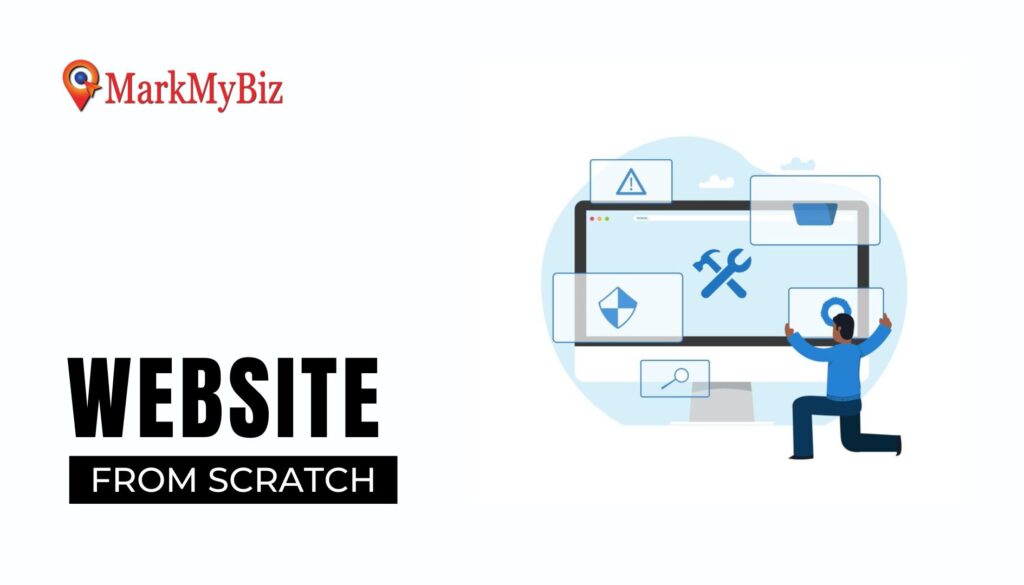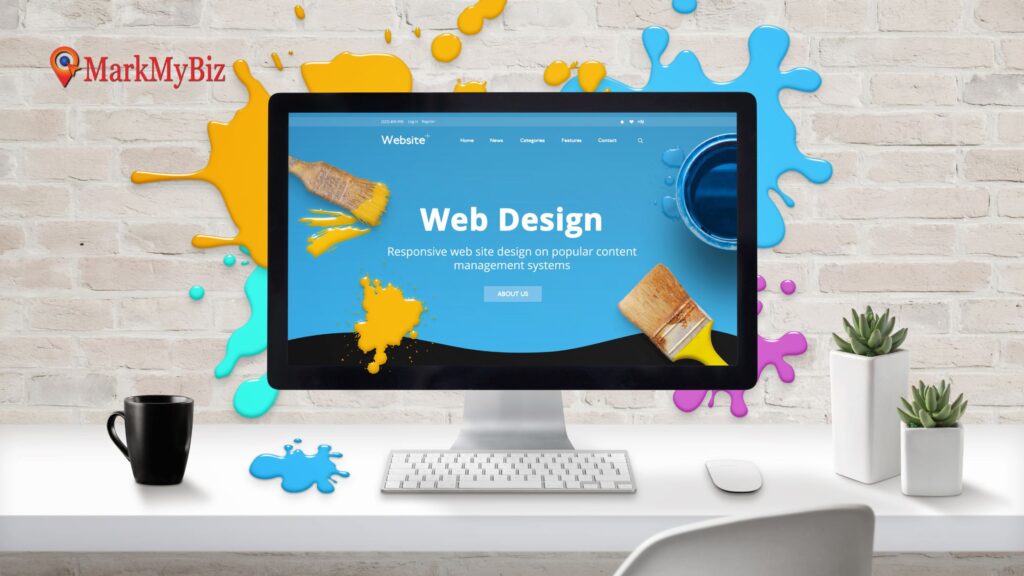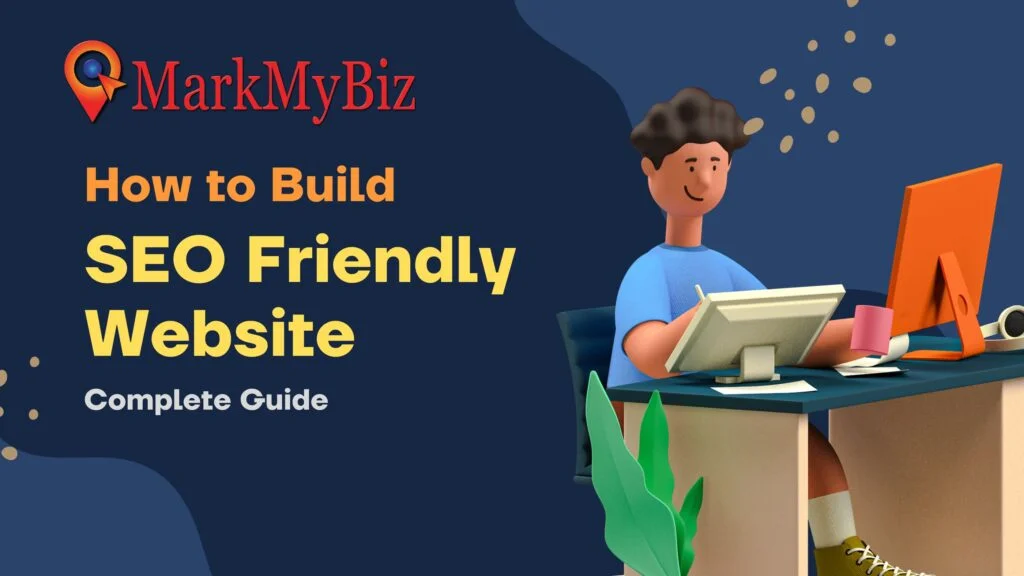Introduction
In today’s digital-driven world, having an online presence is no longer optional—it’s essential. Whether you’re an entrepreneur, business owner, freelancer, or someone looking to showcase your skills, a website acts as your digital storefront, portfolio, or communication hub. It establishes your credibility, helps you reach a wider audience, and plays a vital role in generating leads and revenue.
However, building a website from scratch may seem overwhelming, especially if you have no technical knowledge. But don’t worry! With the right website development approach and tools, you can create a professional, functional, and SEO-friendly website that not only looks great but also performs exceptionally well. This step-by-step guide will walk you through the entire website creation process, covering everything from choosing a domain name to optimizing your website for search engines.
By following these steps, you’ll be able to create a website that attracts visitors, engages them with compelling content, and converts them into loyal customers. Whether you’re launching an eCommerce store, blog, or business website, this guide will help you navigate the process smoothly. Let’s dive in!
Defining Your Website’s Purpose and Audience:
Before you even begin building your website, you need to have a clear understanding of its purpose. Are you creating a blog to share valuable insights and establish yourself as an industry expert? Do you want an online store where customers can browse and purchase products? Or are you a freelancer looking to showcase your portfolio and attract potential clients?
Understanding your goals will shape every decision you make, from the design and functionality to the content and marketing strategy. Equally important is knowing your target audience. The success of your website depends on how well it caters to the needs of its visitors. Identify who your potential users are, what problems they face, and how your website can provide solutions. Conduct market research to understand their preferences, online behaviour, and the type of content they engage with. A website designed with the user experience (UX) in mind will always outperform one that is built without a clear focus.
Choosing the Perfect Domain Name:
Your domain name is your online identity, and choosing the right one is crucial. A good domain name should be short, easy to remember, and relevant to your brand or industry. Avoid using complicated spellings, numbers, or hyphens, as they make it harder for users to type and remember. Ideally, your domain should reflect what your website is about while also being brandable.
Checking domain availability is a crucial step. Use domain registrars like Namecheap, GoDaddy, or Google Domains to find the perfect match. If your preferred domain name is already taken, consider slight variations or try using different domain extensions like .net or .co, though .com remains the most trusted. Once you’ve chosen your domain, register it immediately to secure your brand’s online identity.
Selecting a Reliable Web Hosting Provider:
Web hosting is what makes your website accessible to visitors. Without a good hosting provider, your website might suffer from slow loading speeds, frequent downtimes, or security vulnerabilities. The hosting provider you choose will impact your site’s performance, so it’s important to invest in a reliable one.
There are different types of hosting services available, including shared hosting, VPS hosting, cloud hosting, and dedicated hosting. If you’re starting, shared hosting is a budget-friendly option. However, as your website grows and receives more traffic, upgrading to a VPS or cloud hosting plan will ensure better performance and security. Popular hosting providers like Bluehost, SiteGround, and HostGator offer excellent support and features tailored to different website needs.
Planning Your Website’s Structure and Content:
A well-structured website enhances user experience (UX) and improves search engine rankings (SEO). Start by planning your website’s layout and deciding on the essential pages it should have. A typical website includes a homepage, about page, services page, blog, and contact page.
Your homepage should immediately convey what your website is about and why visitors should explore it further. It should have a clear headline, a brief introduction, and clear navigation to other sections of your site. The About page is where you share your story, mission, and what makes you stand out. If you’re selling products or services, ensure that the relevant pages provide detailed descriptions, high-quality images, and strong calls to action (CTAs).
Content is the backbone of any successful website. Engaging, well-written, and informative content keeps visitors on your site longer and encourages them to take action. Your blog, if you choose to have one, can be a powerful tool for driving organic traffic. By publishing high-quality articles optimized for relevant keywords, you can rank higher on search engines and attract potential customers.
Designing a Visually Appealing Website:
A well-designed website is one that not only looks great but also provides an intuitive user experience (UX). Choose a website builder or content management system (CMS) that suits your technical skills and business needs. WordPress is the most popular CMS due to its flexibility, vast selection of themes, and SEO-friendly structure. If you prefer a drag-and-drop website builder, Wix and Squarespace offer user-friendly interfaces with customizable templates.
Optimizing Your Website for SEO:
Search engine optimization (SEO) is what helps your website rank higher on Google and attract organic traffic. Without proper SEO, even the best-designed website will struggle to get visitors. Begin by optimizing your page titles, meta descriptions, and headers with relevant keywords. These elements play a crucial role in helping search engines understand what your content is about.
Conclusion:
Building a website from scratch may seem complex, but with the right strategy, tools, and SEO techniques, it becomes a manageable and rewarding process. A well-designed website not only enhances your online presence but also helps you attract, engage, and convert your audience effectively. From choosing a domain name to optimizing for SEO, each step plays a crucial role in ensuring your website’s success.
If you find yourself struggling with website development or need expert guidance, you can hire MarkMyBiz for professional website development service in dehradun. With years of experience in creating SEO-optimized, user-friendly websites, we can help you bring your vision to life. Start your online journey today with a website that stands out and delivers results!










